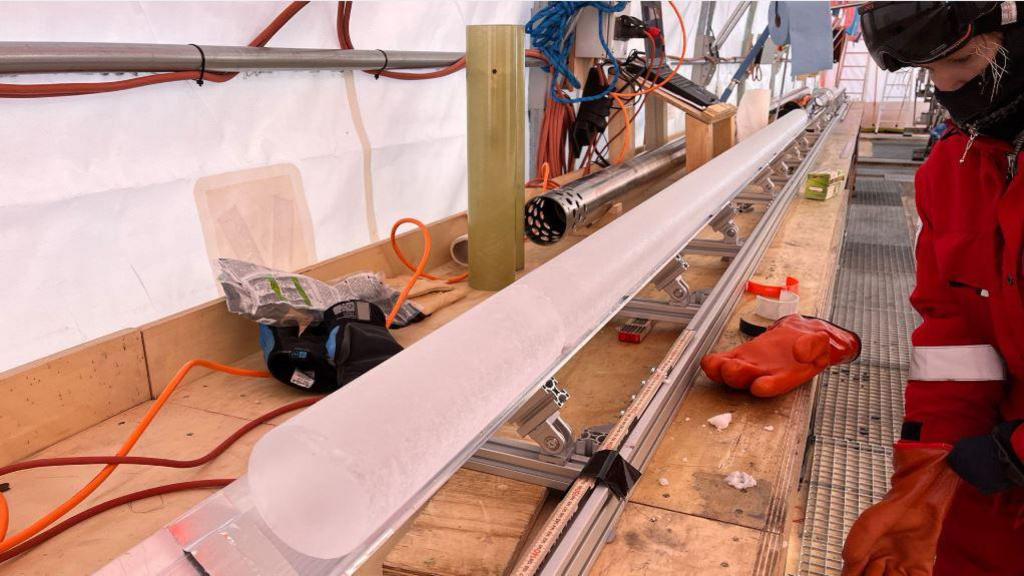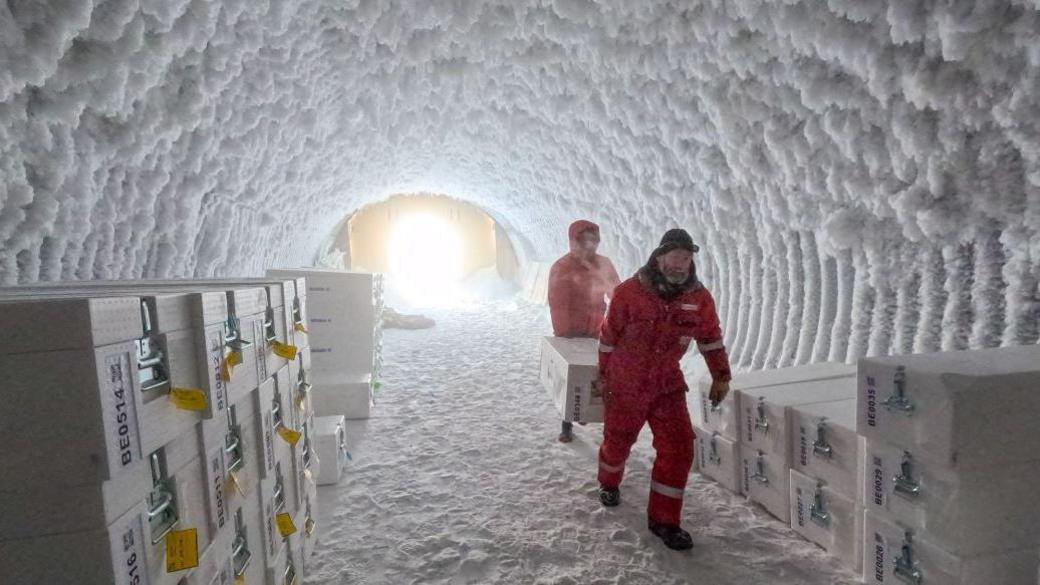Scientists dig up 'world's oldest ice' in Antarctica

- Published
Scientists in Antarctica have dug out what's believed to be the world's oldest ice.
It was extracted from deep underground and is thought to be around 1.2 million years old.
The ice contains ancient air bubbles, which experts hope could help answer key questions about our planet's climate history.
It's also hoped that by studying historic temperature and greenhouse gas levels, it will be possible to predict future climate change.
More like this
Earth has hottest year on record in 2024
- Published12 January
Climate change: What is it?
- Published20 January 2020
N-ice work! Team to count penguins on tiny Antarctic island
- Published9 October 2024
What did scientists do?

The ice is being cut into metre-long sections so that experts across Europe can study it
The international team of scientists was led by the Italian Institute of Polar Sciences and included 10 European nations.
Working at temperatures of -35C, the team drilled a 1.7 mile-long piece of ice from deep within Antarctica.
That's the same length as just over 26-and-a-half professional football pitches!
But it's not the ice the scientists want, it's what's trapped within the ice - air.
This air and other particles formed hundreds of thousands of years ago, which scientists hope could provide us with important information about the Earth's past.
It's thought it could also help solved one of the major mysteries in our planet's climate history.
Around 1 million years ago, glacial cycles were disrupted and some researchers think our ancestors came close to extinction.

Scientists stored the ancient ice inside frozen caves
The team say that they are excited to have been able to dig up the ice.
Professor Carlo Barbante from Ca' Foscari University of Venice, who was involved in the project, called it "an amazing achievement."
He explained: "You have in your hands a piece of ice that is a million years old. Sometimes you see ash layers coming from volcanic eruptions.
"You see the tiny bubbles inside, some bubbles of air that our ancestors breathed a million years ago," he added.
The ice is now being cut into one metre pieces so that it can be sent to a number of European institutions, including the British Antarctic Survey in Cambridge.
Scientists will then be able to begin their testing to find out more about how the Earth's climate has changed over time.
